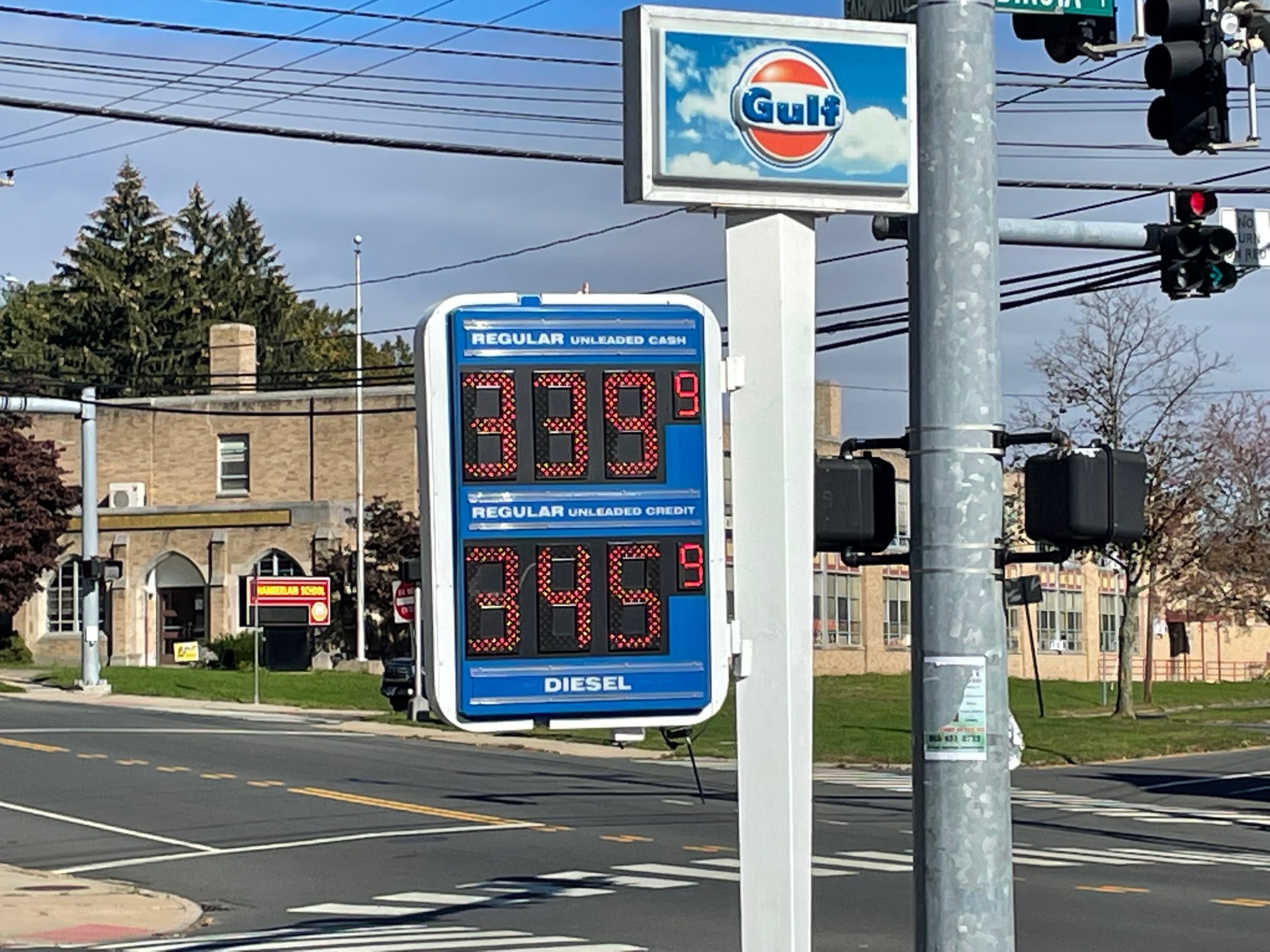In an op-ed for The Connecticut Post entitled “The simple math of addressing climate change,” Rep. Christine Palm, D-Chester, wrote that the Transportation and Climate Initiative program, which would require fuel wholesalers to purchase emission credits at auction in order to sell gasoline in Connecticut, would cost Connecticut drivers $15.60 per year in gasoline price increases.
While the math for this particular claim may be simple, the numbers don’t add up, according to easily searchable federal data and TCI’s own reports.
Palm uses the example of a driver with a 12-gallon tank filling up once every two weeks, meaning said individual would consume roughly 312 gallons of gasoline per year. Therefore, if the TCI program were to add 5 cents to the price of gasoline that driver would spend an additional $15.60 per year on gas, or an additional $23.40 per year if the price increase went to 9 cents per gallon.
Here are the numbers that show this estimate is off the mark:
- The Federal Highway Administration’s Monthly Motor Fuel Reported by States for 2019 showed Connecticut drivers purchased 1.5 billion gallons of gasoline.
- According to the Federal Highway Administration, there were 2.6 million licensed drivers in Connecticut in 2019.
- The average gasoline consumption per licensed driver in Connecticut would be 586.4 gallons per year.
- A price increase of 5 cents per gallon would yield a yearly cost increase of $29.32, and a 9 cents per gallon increase would cost $52.76, more than double Palm’s estimate.
- The 5-9 cent price increase is only for the first year in what is touted as a ten-year program.
The TCI program’s emissions cap is a declining one, meaning each year the number of emission credits available for auction goes down in order to meet the state’s emission reduction goals.
The TCI program includes a cost containment reserve, whereby if the auction bids go too high the program allows for additional emission credits to be auctioned off.
This essentially allows the state to keep the price effects within a certain range, but the 5-9 cent price increase estimate is limited to just 2023, which would be the first year of the program.
According to TCI’s report Estimating the Regional Environmental, Health and Economic Benefits and Costs of the Transportation and Climate Initiative Program, posted online by the Department of Energy and Environmental Protection, “If the regulated entities in the petroleum industry choose to pass the full cost of allowances on to consumers, the prices in 2023 are projected to be $.05 per gallon higher than they would otherwise be.”
“If demand for CO2 allowances is higher than expected, the [Cost Containment Reserve] would help ensure that any impact on gas prices would not exceed $.09 per gallon in 2023,” the report continues.
The authors indicate that they expect on-going price increases to be mitigated because the program “will provide more choices and reduce the exposure of residents and businesses to oil market price fluctuations.”
Those choices may be public transportation or electric vehicle purchases, both of which have been offered as examples of ways in which TCI proceeds might be invested in Connecticut. In his budget proposal, Gov. Lamont dedicated the state’s share of TCI proceeds to reducing bus subsidies from the Special Transportation Fund.
What can’t be accounted for in potential price increases is the secondary auction market. The emission credits can be bought, sold and traded between fuel wholesalers and distributors in a secondary market which won’t be controlled by TCI or the state.
Fuel distributors who may come up short during the initial auctions would be able to purchase or trade emission credits from other companies who have a surplus. They can also purchase a limited amount of carbon offsets.
How that may affect gasoline prices is anyone’s guess at the moment.
Palm’s assertion in the op-ed that small gasoline price increases won’t affect consumption or driving habits is true. However, that means the demand for fuel will remain the same.
The Connecticut Energy Marketers Association, which is steadfastly against the program, believes the TCI program will lead to higher price increases or even fuel shortages, as a cap on emissions is essentially a cap on how much fuel can be sold in the state.
Palm notes that quickly rising gasoline prices haven’t stopped people from driving and, as she points out, gasoline prices have jumped 40 cents per gallon in the last five months alone.
Simple math, however, means the average Connecticut driver in the last five months has experienced a yearly cost increase of $234.56 in gasoline to go about their day.
According to AAA, average gas prices in Connecticut are $1.34 higher than last year, increasing the average Connecticut driver’s cost by $785.77 — along with rising prices of nearly everything due to inflation and supply chain issues.
Palm writes that “the reality is that the consumer pays more for gas constantly, and without a peep,” but if the representative asked around, she could likely find Connecticut residents willing to complain about the price of gas.


James Vansicklin
October 29, 2021 @ 12:22 pm
ANOTHER SCAM FROM THE LIBETARD DEMORAT’S CLUELESS THEY JUST CAN’T ENOUGH FROM US, WAKE UP CT VOTE THESE DEMORAT’S OUT NEXT TUESDAY THEY ARE DESTROYING ARE GREAT STATE